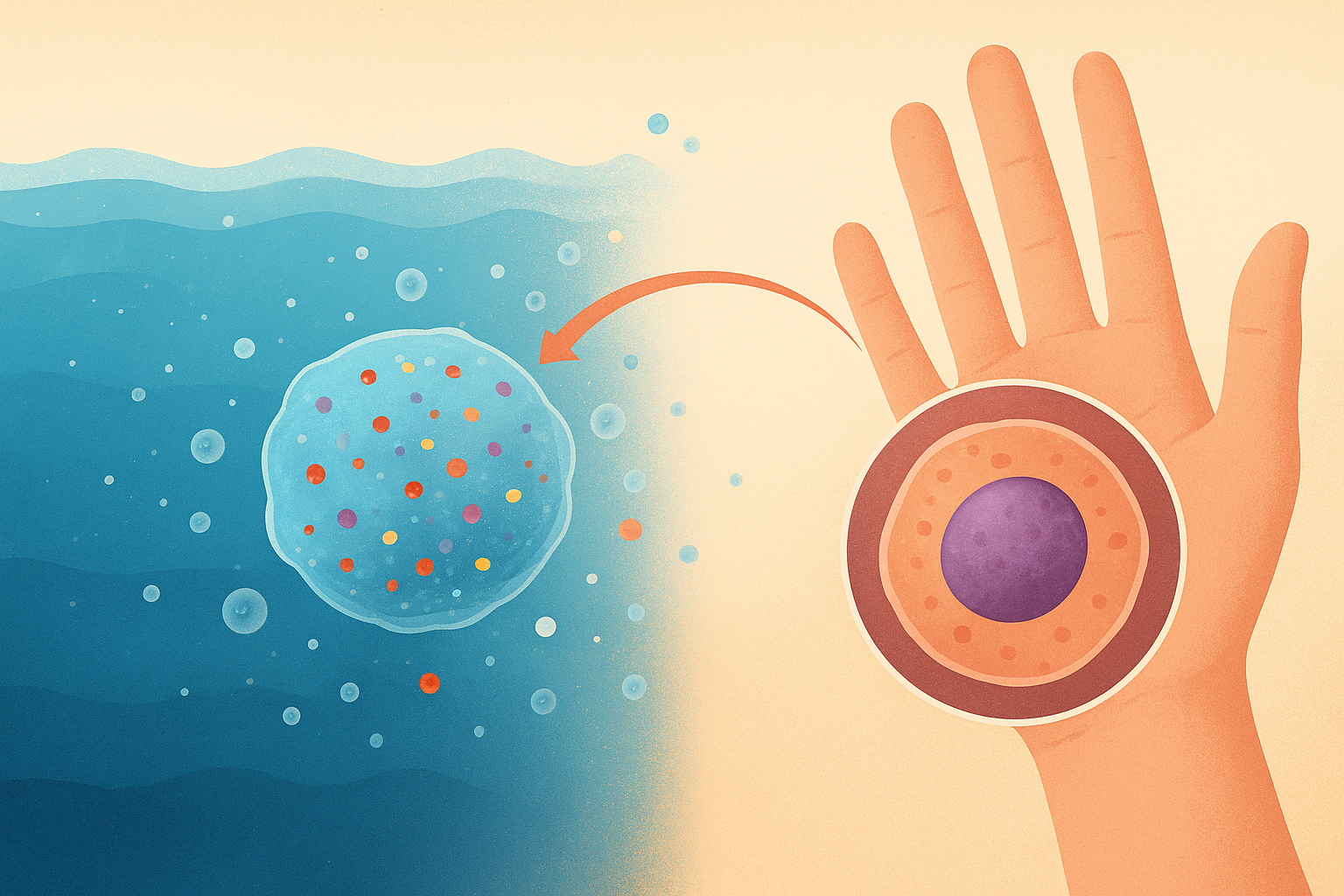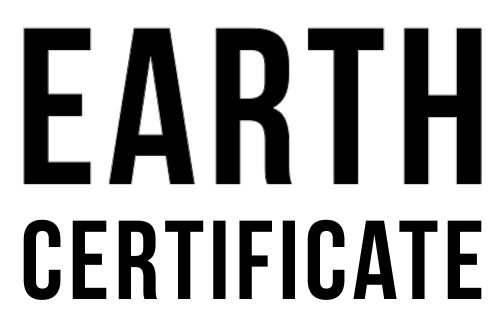Blog
Our Latest Insights
Explore our latest blog post where we share insights on our design process, from initial ideas to completed projects.
Nanoplastics Can Bypass the Skin — And Bring Hidden Chemicals With Them

New research reveals how ocean-exposed nanoplastics disguise themselves to enter human skin cells — raising urgent questions about environmental contamination and the need for stronger product traceability.
Plastic pollution has evolved into something far smaller and more insidious than bottles and bags drifting in the ocean. As plastics fragment over time, they release nanoplastics — particles so small they can slip through biological barriers and interact directly with living cells.
A recent study from Texas A&M University shows that these microscopic pollutants may not travel alone. When nanoplastics float through seawater, they pick up environmental “coatings” made of proteins, toxins, and organic materials. These coatings change how the particles behave — and even help them evade the body’s immune defenses.
Dr. Wei Xu, lead researcher at the Texas A&M College of Veterinary Medicine and Biomedical Sciences, describes the phenomenon as a form of biological camouflage.
“Particles released into the environment can acquire surface coatings that modify how they interact with the body,” Xu explains. “We’ve found that these environmental layers allow nanoplastics to enter skin cells more easily — and once inside, they can avoid being expelled.”
Invisible Pollutants, Visible Impact
Xu’s team exposed synthetic nanoplastic beads to ocean water collected off the coast of Texas. Within days, the particles had developed environmental coatings that changed their properties. When tested on cultured skin cells, these “ocean-aged” plastics were absorbed more easily and persisted longer inside the cells than clean laboratory samples.
In simple terms: the environment turns plastics into better infiltrators.
This matters because nanoplastics can carry whatever they collect — from heavy metals to chemical residues. Once inside the body, they may act as microscopic delivery systems for pollutants that were never meant to cross biological barriers.
Why This Matters for Earth Certificate
At Earth Certificate, we believe that true sustainability must go beyond ingredient lists and packaging claims. This new research highlights exactly why.
Every product released into the world — from cosmetics to food packaging — has the potential to degrade into micro- and nanoplastics. Once in the environment, these particles evolve. They no longer resemble the “safe” materials certified at the time of production; instead, they become complex carriers of environmental contamination.
The Texas A&M findings reinforce our mission:
-
To identify, trace, and disclose potential nano- and microcontaminants across global supply chains.
-
To develop next-generation standards that measure environmental persistence, not just production purity.
-
To certify transparency, ensuring consumers and manufacturers understand what happens when materials leave the lab and meet the living world.
A New Era of Environmental Accountability
As Xu’s research suggests, nanoplastics are not static pollutants — they are reactive participants in Earth’s ecosystems. Their surfaces transform in oceans, rivers, soils, and even air. They interact with algal blooms, industrial waste, and microbial films. Each coating creates a new variant, unpredictable in toxicity or behavior.
This complexity challenges traditional testing models. It demands a new kind of environmental intelligence — one that Earth Certificate is working to build through its EcoID traceability system and the EIAS 9001 Earth Integrity Assurance Standard.
These frameworks don’t stop at verifying material origin. They ask: What does this product become in the real world? How does it interact with water, soil, and living cells? Can we still call it “safe” after exposure to sunlight, salt, and time?
Toward Transparent Futures
The lesson from Texas A&M’s discovery is clear: the smallest particles can carry the biggest consequences. Understanding them — and holding producers accountable for their long-term impact — is essential to ecological integrity.
Earth Certificate continues to advocate for research partnerships, transparent reporting, and unified testing standards that consider environmental transformation. Only then can certification systems truly protect both people and planet from hidden pollutants.
Earth Certificate – Measuring What Matters Most: Purity, Transparency, and Truth.
We offer the best services for our customer


